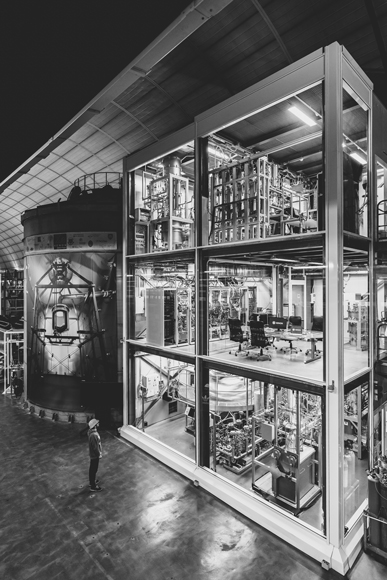
New results of XENONnT, the latest detector of the XENON project dedicated to the direct search for Weakly Interacting Massive Particles (WIMPs), particles that could make up dark matter, were presented in a seminar held today, Wednesday, March 22, at the INFN Gran Sasso National Laboratories.
With an experimental exposure of just over one ton-year, the data analysis confirms the high sensitivity achieved in this phase by the detector thanks to the reduction of background radiation. In this way, XENONnT obtained new inner limits rate for the interaction of dark matter with the nuclei of ordinary matter. The results have been reported in an article submitted to Physical Review Letters and in the preprint already available on the XENON website (https://xenonexperiment.org/).
"With XENONnT, we have improved the results of its predecessor XENON1T, thanks to an active Xenon mass three times larger and a background noise five times lower, obtained by using new experimental techniques such as the Radon distillation column and the Neutron Veto," declares Elena Aprile of Columbia University in New York, spokesperson of the experiment.
XENONnT has been designed to detect dark matter with a sensitivity 10 times greater than its predecessor. The detector at the heart of the experiment is a time projection chamber with Xenon in a dual-phase, both liquid and gaseous, measuring approximately 1.5 meters in diameter and height, filled with 5900 kg of ultra-pure xenon maintained in liquid state at a temperature of -95°C. It serves as an active target for the interaction of dark matter particles. The detector is in the center of a water tank, which is used as an active shield to detect muons and neutrons that could simulate false signals. XENONnT was built and started its operations between spring 2020 and spring 2021, in one of the experimental halls of the Gran Sasso underground laboratory. The data that led to these results were acquired between July and November 2021.
The interaction of a WIMP particle with the atomic nuclei of Xenon produces a weak scintillation light, followed by the production of some electrons that, once transported by the electric field in the gaseous phase, are accelerated and produce a second light signal. Both signals are acquired and processed, allowing to acquire precise information on the energy and position of the event.
Experiments dedicated to search for dark matter require as low levels of radioactive background as possible, both from intrinsic sources in the Xenon target and from materials of the detector and surrounding environment. The first source of background is mainly emitted by Radon, a natural radioactive gas that is constantly generated by the materials of the detector and is extremely difficult to reduce. The XENON scientific collaboration has been a pioneer in the development of technologies that have allowed to reduce this background radiation, thanks to the selection of materials and a distillation system that continuously separates Radon from Xenon. Another important source of background is due to neutrons generated by the residual natural radioactivity present in the detector's own materials. In XENONnT, the impact of this kind of disturbing radiation has been mitigated thanks to a new system called the "Neutron Veto" installed in the water tank surrounding the cryostat. This system allows the recognition and elimination of events due to neutrons, which could otherwise be confused with those due to WIMPs. The XENONnT detector is so sensitive to rare events that even neutrinos, particles with the lowest known probability of interaction to date, can represent a potential background.
The Italian contribution. The INFN groups, coordinated by Marco Selvi of the INFN Division of Bologna, and led by Gabriella Sartorelli (University and INFNBologna), Walter Fulgione (INFN-LNGS), Giancarlo Trinchero (INAF and INFN-Torino), Michele Iacovacci (University and INFN Naples), Alfredo Davide Ferella (University of L'Aquila) and Guido Zavattini (University and INFN Ferrara), have been part of the XENON project since 2009. The Italian groups are responsible for the design, construction and operation of the muon and Neutron Veto system within the water shield, which is crucial for reducing environmental backgrounds, as well as those emitted by materials and residual cosmic radiation. They have designed and built various infrastructures at LNGS and led the Monte Carlo simulation group for the prediction and optimization of detector performance, as well as the estimation of various background sources. Furthermore, they participate in the purification of xenon, they contribute to experiment's computing infrastructure through CNAF and they also are involved in various aspects of the data analysis that led to these results of XENONnT.
"Further information about the XENON project: https://xenonexperiment.org/"
XENON Collaboration - This email address is being protected from spambots. You need JavaScript enabled to view it.


